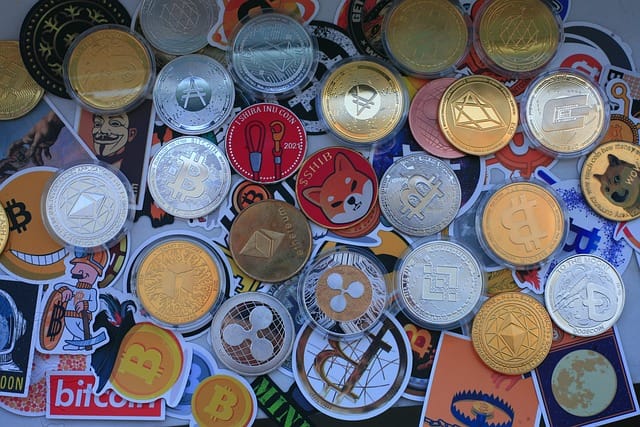Bussiness
Is the crypto market oversaturated these days?

The cryptocurrency market has experienced a surge in new projects, leading to questions about oversaturation. The influx of tokens, DeFi platforms, and NFTs has created a competitive landscape, challenging new projects to stand out. This article explores the implications of this boom and how it has contributed to a crowded market. The question of market saturation is valid, and utilizing automated trading bots like bitcoinsystem.app/ can offer a way to navigate the crowded crypto landscape.
Overview of the increasing number of crypto projects
The cryptocurrency market has witnessed an exponential increase in the number of projects in recent years. This growth can be attributed to several factors, including the rising popularity of cryptocurrencies, the increasing adoption of blockchain technology, and the emergence of new use cases for digital assets. As a result, a diverse range of projects has emerged, each aiming to solve specific problems or cater to niche markets within the broader crypto ecosystem.
One of the key drivers behind the proliferation of crypto projects is the ease of creating new digital assets and launching them on blockchain networks. This accessibility has led to a flood of new projects entering the market, ranging from tokens issued as part of initial coin offerings (ICOs) to decentralized finance (DeFi) platforms and non-fungible tokens (NFTs).
Explanation of different types of crypto projects
Tokens are digital assets that are issued on a blockchain network and represent a particular value or utility. They can be used for various purposes, such as accessing a platform or service, participating in governance, or representing ownership of an asset.
DeFi projects, on the other hand, are decentralized applications (dApps) that aim to recreate traditional financial services, such as lending, borrowing, and trading, using blockchain technology.
NFTs are unique digital assets that represent ownership of a specific item or piece of content, such as artwork, music, or collectibles. Unlike fungible tokens, which are interchangeable, each NFT has a unique identifier and cannot be replicated or exchanged for another token of the same type.
Discussion on how this boom has led to a crowded market
The rapid increase in the number of crypto projects has led to a crowded and highly competitive market. New projects often struggle to stand out and attract users and investors amid the sea of existing options. This competition has also led to a proliferation of copycat projects, which aim to capitalize on the success of established projects without offering significant innovation or value.
Moreover, the influx of new projects has raised concerns about the quality and legitimacy of many offerings in the market. Scams and fraudulent projects have become more common, making it challenging for investors to navigate the space safely. Additionally, the sheer number of projects available can be overwhelming for users, who may find it difficult to identify projects that align with their values and investment goals.
Overall, while the growth of the cryptocurrency market has been a positive development, the increasing number of projects has also raised questions about sustainability and the long-term viability of many offerings. As the market continues to evolve, it will be crucial for projects to differentiate themselves and demonstrate real value to attract and retain users and investors.
Factors contributing to oversaturation
The oversaturation of the cryptocurrency market can be attributed to several key factors. One of the primary drivers is the low barrier to entry for creating new projects. The accessibility of blockchain technology and smart contracts has made it easy for anyone to launch a new token or DeFi platform, leading to a flood of new projects entering the market.
Another factor contributing to oversaturation is the hype and speculation surrounding cryptocurrencies. The promise of quick profits has attracted many opportunistic projects looking to capitalize on the frenzy. This has led to a proliferation of low-quality projects with little substance or innovation, further saturating the market.
Additionally, the lack of regulation in the cryptocurrency space has allowed fraudulent and scam projects to thrive. These projects often make grand promises but fail to deliver, eroding trust in the market and adding to the overall noise and clutter.
The increasing competition among projects to attract users and investors has also contributed to oversaturation. Many projects resort to aggressive marketing tactics and incentives to stand out, further saturating the market with noise and distractions.
Conclusion
In conclusion, while the growth of the cryptocurrency market has been exciting, it has also resulted in challenges. The increasing number of projects has led to a crowded market, making it difficult for new projects to gain traction. However, by focusing on innovation and value creation, projects can differentiate themselves and thrive in this competitive landscape.
The above information does not constitute any form of advice or recommendation by London Loves Business and is not intended to be relied upon by users in making (or refraining from making) any finance decisions. Appropriate independent advice should be obtained before making any such decision. London Loves Business bears no responsibility for any gains or losses.










